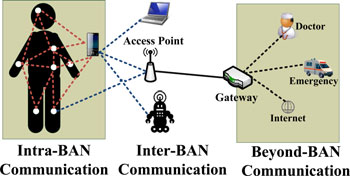Ambient-assisted living tools help older adults live more independently
By Parisa Rashidi and Alex Mihailidis
NOTE: This is an overview of the entire article, which appeared in the May 2013 issue of the IEEE Journal of Biomedical and Health Informatics.
Click here to read the entire article.
Abstract (provided by authors) In recent years, we have witnessed a rapid surge in assisted living technologies due to a rapidly aging society. The aging population, the increasing cost of formal health care, the caregiver burden, and the importance that the individuals place on living independently, all motivate development of innovative-assisted living technologies for safe and independent aging. In this survey, we will summarize the emergence of ‘ambient-assisted living’ (AAL) tools for older adults based on ambient intelligence paradigm. We will summarize the state-of-the-art AAL technologies, tools, and techniques, and we will look at current and future challenges.
The world population is aging, as medical advances have allowed people to live longer. But aging brings challenges to older adults, and to the society in which they exist. In the U.S., about 80% of those over 65 are living with at least one chronic disease, and an estimated 5.4 million senior citizens are suffering from Alzheimer’s disease. The article summarizes the state-of-the-art “ambient-assisted living” (AAL) technologies, tools, and techniques, and discusses current and future challenges for the adult healthcare system. The ability to live independently is of great concern to older adults, making it imperative for scientists and researchers to develop more advanced AALs.
AAL tools support assisted living by exhibiting “ambient intelligence” – being sensitive and responsive to the presence of people. Recent advancements in several technological areas have helped the vision of AAL to become a reality. These technologies include smart homes, assistive robotics, e-textile, and mobile and wearable sensors. The article examines each technology in detail.
Already, smart home projects are in place, aimed at supporting assisted living. The article lists several dozen of these, and describes the sensor technologies that are being used to monitor the residents. Assistive robots can help older adults in their daily activities. Their activities cover a wide range from housekeeping to transfer to companionship. Tying these together and providing the intelligence and communication with the outside world are a variety of body area networks (BANs). BANs frequently use IEEE 802.15 (“ZigBee”) as their radio interface. “Intra-BAN Communications” refer to communications between body sensors.The “Inter-BAN Communications” include communicating data from personal devices such as smart phones to the access points. “Beyond-BAN Communication” connects the access points to the internet and other networks.

Intelligent algorithms are a key component of ambient intelligence. One of the most important algorithms, cited by the authors, is “human activity recognition”, by which patterns in activity are recognized from sensor inputs. The article discusses the aspects of this component in considerable detail, along with algorithms to recognize surroundings, do planning, etc.
Key applications of AAL, design issues and social and ethical concerns are all explored in this article, which provides a good introduction to the field – with plenty of literature references.
ABOUT THE AUTHORS
Parisa Rashidi (M’07) received the B.Sc. degree in computer engineering from the University of Tehran, Iran, and the M.Sc. and Ph.D. degrees in computer science from Washington State University, Washington, USA.
She is currently an Assistant Professor at Northwestern University, Chicago, IL. Her research interests include ambient intelligence, ambient-assisted living systems, and applying data mining and machine learning techniques to various health care problems. She has organized workshops and tutorial sessions regarding context aware systems and assisted living technology. Ms. Rashidi has served on the technical program committee of several conferences including the ACM International Conference on Knowledge and Data Discovery, the IEEE International Conference on Data Mining, the IEEE International Conference on Tools with Artificial Intelligence, and the IEEE International Smart Environments to Enhance Health Care. She has been a reviewer of numerous journals, such as the IEEE TRANSACTIONS ON KNOWLEDGE AND DATA ENGINEERING, the IEEE TRANSACTIONS ON SYSTEMS, MAN, AND CYBERNETICS, and the ACM TRANSACTION ON INTELLIGENT SYSTEMS, among others.
Alex Mihailidis received the B.A.Sc. degree in mechanical and industrial engineering, the M.A.Sc. degree in biomedical engineering, both from the University of Toronto, ON, Canada, and the Ph.D. degree in bioengineering from the University of Strathclyde, Glasgow, U.K.
He is the Barbara G. Stymiest Research Chair in rehabilitation technology at the University of Toronto and Toronto Rehabilitation Institute, where he is also an Associate Professor in the Department of Occupational Science and Occupational Therapy and at the Institute of Biomaterials and Biomedical Engineering, with a cross appointment in the Department of Computer Science. He has been conducting research in the field of pervasive computing and intelligent systems in health for the past 13 years, having published more than 100 journal papers, conference papers, and abstracts in this field. He has specifically focused on the development of intelligent home systems for elder care and wellness, technology for children with autism, and adaptive tools for nurses and clinical applications.






